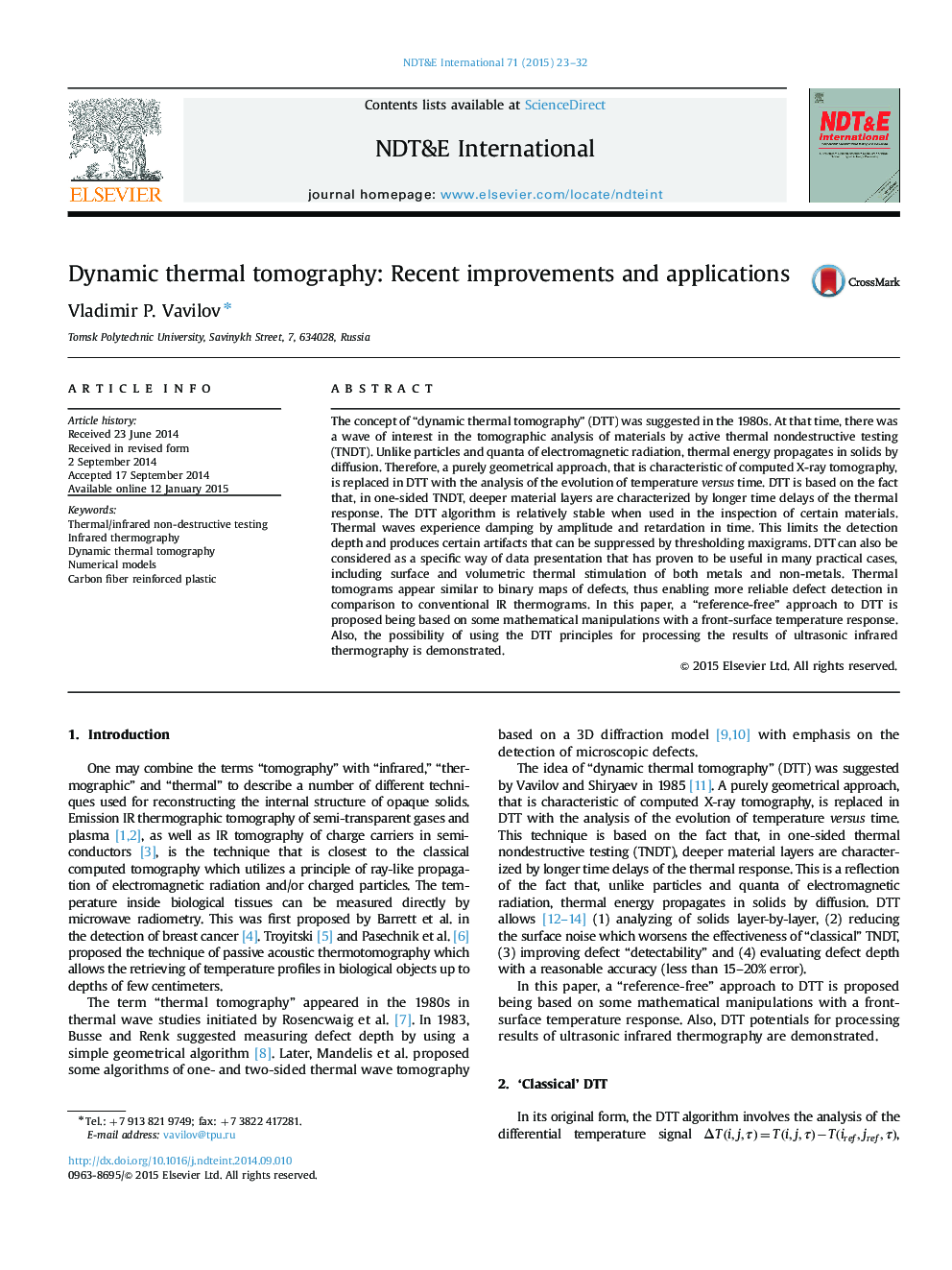| کد مقاله | کد نشریه | سال انتشار | مقاله انگلیسی | نسخه تمام متن |
|---|---|---|---|---|
| 295036 | 511515 | 2015 | 10 صفحه PDF | دانلود رایگان |
• We summarize a basic principle and features of dynamic thermal tomography.
• Reference-free tomography can be performed by manipulating front-surface temperature.
• Thermal tomography can be realized with surface and volumetric thermal stimulation.
• Thermal tomograms enhance defect detection compared to conventional IR thermograms.
The concept of “dynamic thermal tomography” (DTT) was suggested in the 1980s. At that time, there was a wave of interest in the tomographic analysis of materials by active thermal nondestructive testing (TNDT). Unlike particles and quanta of electromagnetic radiation, thermal energy propagates in solids by diffusion. Therefore, a purely geometrical approach, that is characteristic of computed X-ray tomography, is replaced in DTT with the analysis of the evolution of temperature versus time. DTT is based on the fact that, in one-sided TNDT, deeper material layers are characterized by longer time delays of the thermal response. The DTT algorithm is relatively stable when used in the inspection of certain materials. Thermal waves experience damping by amplitude and retardation in time. This limits the detection depth and produces certain artifacts that can be suppressed by thresholding maxigrams. DTT can also be considered as a specific way of data presentation that has proven to be useful in many practical cases, including surface and volumetric thermal stimulation of both metals and non-metals. Thermal tomograms appear similar to binary maps of defects, thus enabling more reliable defect detection in comparison to conventional IR thermograms. In this paper, a “reference-free” approach to DTT is proposed being based on some mathematical manipulations with a front-surface temperature response. Also, the possibility of using the DTT principles for processing the results of ultrasonic infrared thermography is demonstrated.
Journal: NDT & E International - Volume 71, April 2015, Pages 23–32
